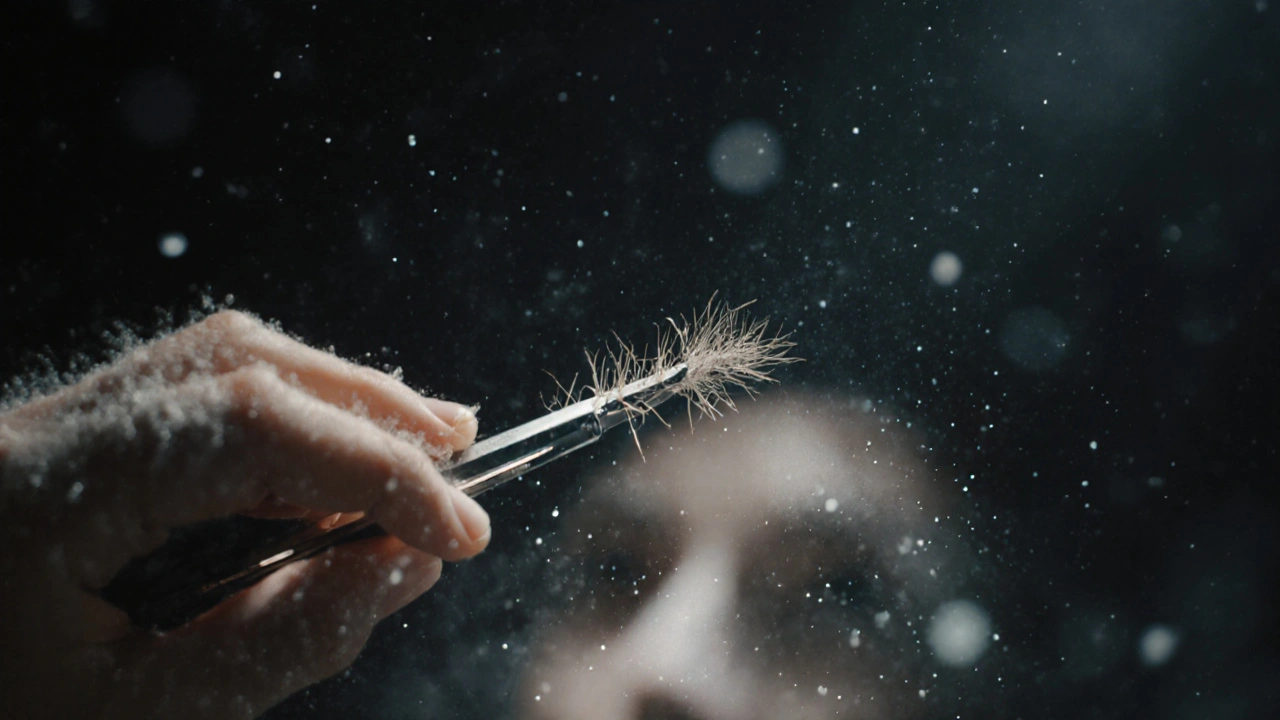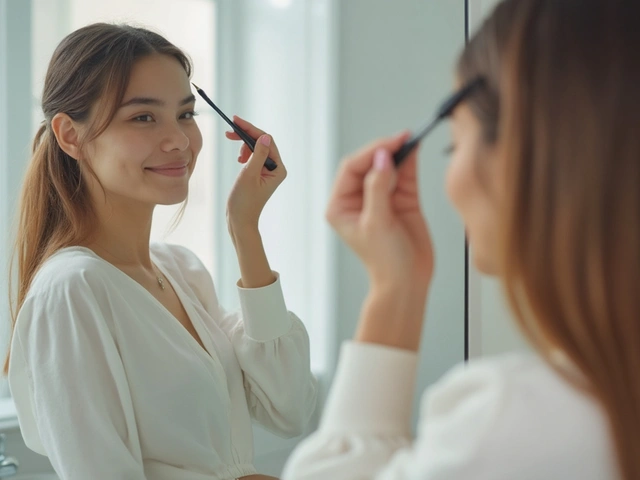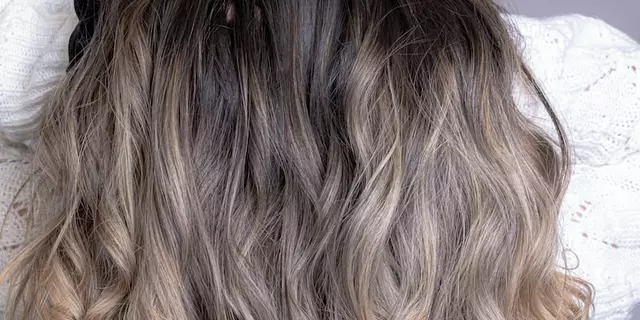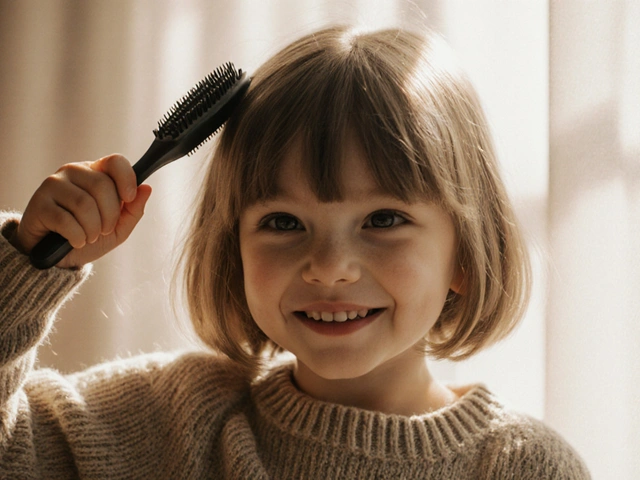Ever pulled up your mirror after a threading session and stared at your eyebrows like they belong to someone else? You thought threading would fix your sparse brows, but now they look too thin, too sharp, too... wrong. You’re not alone. Thousands of people walk out of salons each week wondering if threading actually improves their brows-or if it just makes them disappear.
Threading doesn’t magically fix thin eyebrows. It removes hair. That’s it. If your brows were already light, patchy, or over-plucked, threading won’t add volume. It’ll just make them smaller. And if you’re hoping for a fuller, more defined look, you might be setting yourself up for disappointment.
What Threading Actually Does to Your Brows
Threading is a hair removal method that uses a twisted cotton thread to pluck hairs directly from the follicle. It’s precise. It’s clean. And it’s brutal on fine or sparse hair. Unlike waxing, which pulls off a layer of hair and some dead skin, threading targets individual hairs. That means it’s great for shaping-but terrible for adding back what’s already gone.
Think of it like trimming a hedge that’s already half-dead. You can make it neat, but you can’t make it thick. If your brows are naturally light, have sparse growth due to age, over-plucking, or hormonal changes, threading will only highlight those gaps. You’ll end up with brows that look like they’ve been drawn on with a pencil-and not a good one.
Why People Think Threading Fixes Thin Brows
The myth that threading makes thin brows look better comes from two places: timing and illusion.
Right after threading, your brows look crisp. The hairs are neatly aligned. The arch is sharp. The outline is clean. That’s the honeymoon phase. But within a few days, as the hairs grow back unevenly, those gaps become obvious. What looked like a perfect shape now looks like a mistake.
Salon technicians often recommend threading because it’s faster and cheaper than waxing. They don’t always ask if your brows are naturally thin or if you’ve been tweezing since high school. They just shape what’s there. And if you walk in with brows that are already barely there? You leave with brows that are barely there-just more defined.
Threading vs. Waxing: Which One Makes Thin Brows Worse?
Waxing removes hair in larger patches. It’s rougher on the skin, but it can sometimes leave behind a slightly fuller appearance because it doesn’t go as deep into the fine hairs. Threading, on the other hand, picks out every single hair-even the baby hairs that give brows their soft, natural edge.
Here’s what most people don’t realize: the fine, short hairs around your brows aren’t “unwanted.” They’re part of the shape. They create depth. They make brows look full even when they’re not thick. Threading removes those. Waxing sometimes leaves them.
So if your brows are thin, waxing might be the less damaging option. It’s not perfect-but it’s less likely to leave you with brows that look like they’ve been sandblasted.

When Threading Might Actually Help Thin Brows
There’s one situation where threading improves thin brows: if they’re messy, uneven, or overgrown-not sparse.
Imagine your brows have grown wild. Hairs stick out sideways. The tail drags too low. The inner arch is messy. Threading can clean that up. It can create structure. And when structure is added to brows that still have enough hair, they look fuller-not because more hair is there, but because it’s arranged better.
That’s the key: threading improves shape, not density. If you have decent hair growth but bad shape, threading is your friend. If you have thin growth and bad shape? You need something else.
What to Do Instead If Your Brows Are Thin
Threading won’t fix thin brows. But you can fix them. Here’s what actually works:
- Use a brow growth serum. Products with peptides, biotin, or castor oil can stimulate growth over 6-12 weeks. Not magic, but real. Studies show consistent use can increase visible hair density by up to 25%.
- Stop plucking for three months. Let your brows grow out. You’ll be shocked at how much hair you’ve lost to years of tweezing. Give your follicles a break.
- Try microblading or powder brows. These semi-permanent makeup techniques fill in gaps with pigment. They don’t grow hair-but they create the illusion of fullness. Many women over 35 swear by this.
- Use a tinted brow gel. A good tinted gel (like Benefit’s 24-Hour Brow or Anastasia Beverly Hills Brow Gel) adds color and holds hairs in place. It doesn’t grow hair, but it makes thin brows look denser instantly.
- Fill in with a pencil or powder. Use short, hair-like strokes. Don’t draw a line. Mimic the natural direction of your hairs. A light hand goes a long way.
The Real Problem: Over-Threading
The biggest threat to thin brows isn’t threading itself-it’s how often people do it. Monthly threading sessions, combined with daily tweezing, are a recipe for permanent thinning. Hair follicles can get damaged from too much pulling. Once they shut down, they don’t come back.
I’ve seen clients in Houston come in with brows so thin they look like they were erased with an eraser. They’ve been threading every four weeks since 2018. Their brows haven’t grown back properly since 2020. That’s not aging. That’s over-treatment.
Threading every six to eight weeks is fine. Every four weeks? That’s too much. Especially if your brows are already sparse. Let them breathe. Let them grow. Let them recover.

How to Tell If Your Brows Are Too Thin After Threading
Ask yourself these three questions after your next session:
- Do I need to fill in my brows just to look like I have them?
- Can I see skin between the hairs in the arch or tail?
- Do I feel like I have to wear makeup just to cover up my brows?
If you answered yes to any of those, your brows are too thin. You’re not enhancing them-you’re erasing them.
Good brows aren’t about being perfectly shaped. They’re about looking natural. They’re about having enough hair to frame your face without needing a makeup brush.
What to Say to Your Threader
Next time you sit down for threading, say this: “I have thin brows. Please leave the fine hairs around the edges. Don’t remove anything unless it’s clearly out of place.”
Most threaders will respect that. If they don’t? Find someone else. A good threader doesn’t just shape brows-they preserve them.
Also, ask to see your brow shape before they start. Point to the areas you want kept. Say, “I want to keep this inner arch,” or “Don’t touch the tail.” Most professionals will accommodate you if you’re clear.
Final Verdict: Threading Won’t Fix Thin Brows
Threading won’t make thin eyebrows look better. It’ll make them neater. But neat isn’t full. Neat isn’t natural. Neat doesn’t fix what’s missing.
If your brows are thin, the answer isn’t more threading. It’s patience. It’s growth serums. It’s letting go of the idea that perfect shape equals beauty. It’s learning to love the softness of your natural hair-even if it’s sparse.
Threading is a tool. Not a cure. Use it wisely-or don’t use it at all.
Does eyebrow threading make eyebrows grow back thicker?
No, threading does not make eyebrows grow back thicker. It removes hair from the root, which can actually lead to finer regrowth over time if done too often. Hair thickness is determined by genetics and follicle health, not by the method of removal. Repeated threading can even damage follicles, leading to less growth, not more.
How long do eyebrows take to grow back after threading?
Eyebrows typically take 4 to 8 weeks to grow back fully after threading, depending on your individual hair growth cycle. Fine hairs around the edges may appear in as little as 2 weeks, but the full shape won’t return until the deeper hairs have regrown. If you’ve been threading every 3-4 weeks for years, your regrowth may be slower or patchier due to follicle fatigue.
Is threading better than waxing for thin eyebrows?
For thin eyebrows, waxing is often gentler than threading. Waxing removes larger patches of hair and sometimes leaves behind fine hairs that add natural fullness. Threading removes every single hair, including the soft ones that give brows dimension. If your brows are already sparse, waxing may preserve more of your natural shape.
Can thin eyebrows be fixed without makeup?
Yes, but it takes time. Stop threading or tweezing for at least 3 months to let your brows grow out. Use a brow growth serum with peptides or castor oil daily. Eat enough protein and biotin-rich foods. After 6-12 weeks, you’ll likely see new growth. Once hair returns, shape them gently-only removing what’s clearly out of place.
Why do my eyebrows look so thin after threading?
Your eyebrows look thin after threading because the technique removes every hair in its path-including the fine, short hairs that naturally fill in gaps. If your brows were already sparse, threading highlights those gaps instead of hiding them. It’s not that your brows got thinner-it’s that the shape became more defined, making the lack of hair more visible.







Fredda Freyer
November 19, 2025 AT 03:19Threading doesn’t grow hair-it just rearranges the wreckage. I used to thread every four weeks like it was a religious ritual. Then I realized my brows were just... ghosts. The real fix? Patience and castor oil. I stopped everything for six months. No tweezing, no threading, no makeup. Just sleep and a dropper of oil every night. Now? I’ve got actual brow real estate. Not perfect, but alive. That’s the difference between correction and restoration.
Gareth Hobbs
November 20, 2025 AT 18:01Threading?? You’re letting some girl in a salon with a piece of STRING near your FACE?? What’s next? Waxing with a mop?? In my day, we just used scissors and common sense. Now everyone’s out here turning their brows into stick figures because they’re too lazy to grow a spine-or a full brow. This is why America’s falling apart. You can’t fix stupid with a cotton thread.
Zelda Breach
November 22, 2025 AT 12:24Let’s be clear: if you’re asking if threading fixes thin brows, you’ve already lost. The fact that you’re even considering it means you’ve been following beauty influencers who think ‘clean lines’ equals ‘beautiful.’ Newsflash: your brows aren’t a logo. They’re biological tissue. And if you’re threading monthly, you’re not grooming-you’re performing a slow-motion follicle execution. Congratulations, you’ve weaponized aesthetics.
Alan Crierie
November 22, 2025 AT 16:24Hey, I get it-threading feels precise, and it’s tempting when you’re in a rush. But if your brows are thin, think of them like a garden. You wouldn’t pull every weed and call it landscaping. You’d water, nurture, wait. I switched to waxing every 6–8 weeks and left the baby hairs. My brows look softer, fuller, and honestly? More me. Also, a little brow gel goes a long way. No need to panic. You’re not broken-you’re just over-treated. 🌿
Nicholas Zeitler
November 24, 2025 AT 04:54STOP. THREADING. EVERY. FOUR. WEEKS. Seriously. If you’re doing it that often, you’re not maintaining-you’re mutilating. Your follicles are not a vending machine. They don’t spit out hair on demand. Let them rest. Use a serum. Eat eggs. Sleep. And if you’re worried about shape? Use a pencil. That’s it. You don’t need a salon to tell you what your face should look like.
Teja kumar Baliga
November 26, 2025 AT 01:51In India, we used to use turmeric and coconut oil for brows-no threading, no waxing. Just patience. My grandma said, ‘Hair grows like rice-slow, but strong if you let it breathe.’ She was right. I stopped threading after 2019. Now my brows are thicker than my college years. No magic, just time. And maybe a little castor oil.
k arnold
November 26, 2025 AT 07:32So you paid $30 to have your eyebrows erased? Congrats. You’re now the poster child for beauty industrial complex exploitation. Next you’ll be paying someone to draw on your eyelashes with a Sharpie.
Tiffany Ho
November 28, 2025 AT 06:43I used to hate my thin brows but then I just stopped worrying about them so much. Now I use a tinted gel and call it a day. They look fine. Not perfect, but fine. And honestly? People don’t notice. They notice your smile, not your eyebrows.
michael Melanson
November 28, 2025 AT 11:36I tried the serum. I did the three-month break. I even stopped using my tweezers like they owed me money. Took six months. But now? I’ve got real brow hair again. Not Hollywood thick, but real. And I don’t need makeup to feel like me anymore. Worth it.
lucia burton
November 28, 2025 AT 15:06Let’s deconstruct this paradigm shift in facial aesthetics. The current hegemony of brow minimalism, perpetuated by algorithmic beauty standards and influencer-driven commodification of grooming, has created a feedback loop wherein individuals with naturally sparse follicular density are pathologized into seeking invasive, repetitive epilation as a corrective measure-when in fact, the biological reality is that hair follicle cycling is governed by genetic expression, hormonal modulation, and environmental stressors-not by the precision of a cotton thread. The solution is not more removal, but regenerative intervention: topical peptide-based serums, biotin supplementation, and follicular rest cycles-interventions that address the root cause rather than exacerbating the symptom through mechanical trauma. The cultural obsession with ‘clean lines’ is not beauty-it’s a form of self-erasure disguised as enhancement.